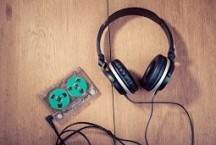
What’s a Decibel?
In an effort to protect our ears from the effects of noise-induced hearing loss (NIHL), we need to be wary of how long we are exposed to dangerously high volumes. Education
Queensland estimates that almost over a third (37 per cent) of all hearing loss cases in Australia are caused by overexposure to loud noise1, making it important to be aware of just what you are subjecting your ears to.
The National Acoustic Laboratories (NAL) note that sounds 85 decibels and above can cause permanent damage to our hearing, but just how are decibels measured?
Not so similar
At first glance, the difference between safe noise levels and the decidedly unsafe can appear to be a relatively small margin. For example, you can listen to sounds of 75 decibels for an immeasurable amount of time, but as soon as it rises to 85, you can incur damage to your hearing after listening for just eight hours(NAL).
Take a step up the ladder, and at 90 decibels, you can harm your ears after only two hours’ exposure. How does that work?
As explained by Noise Help, from 0 dB, every 3 dB increase results in the sound intensity being doubled. This means that a sound at 70 dB will appear to be four times louder than one at 50 dB. Our perception of loudness is a complex psychological phenomenon, meaning not everyone will perceive loudness the same way.
This is why it can be a mistake to rely solely on what we think is ‘loud’ as a way to detect whether a sound could be damaging. The risk factor for your hearing is down to the intensity of the sound, rather than how loud you think it is. If you are concerned about a noisy environment, you can download a decibel metre application for your smartphone.
Education Queensland, Noise fact sheet.
National Acoustic Laboratories [NAL], Hearing Loss Prevention (Protection).
Noise Help, The Decibel Scale.
Admin.
